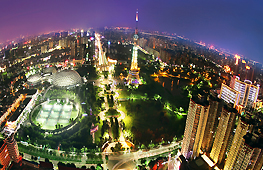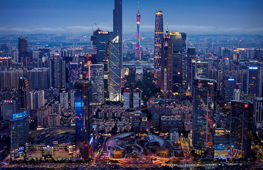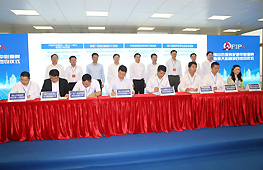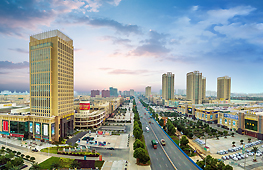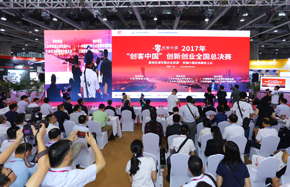Enjoying a slice of the cold
China is expected to see rapid growth in winter tourism, thanks to the 2022 Olympic and Paralympic Winter Games, and a concerted push by provinces in the north
The Christmas and New Year periods are now very popular points on winter tourism calendar in China, with the number of travelers up by more than 150 percent as compared with the same period last year, according to Lvmama, a popular online tourist service platform.
A considerable number of tourists chose to experience winter the way it's supposed to be enjoyed. And tours to northern Chinese cities featuring hot springs, skiing and other winter attractions saw brisk bookings.
The winter tourism attractions, shopping discounts and the fact that many workers use the end of the year as an opportunity to exhaust their unused paid leave are fueling the year-end tourism market, says Li Qiuyan, the general manager of Lvmama's publicity department.
Meanwhile, China is expected to see quick growth in winter tourism over the next few years, mainly due to Beijing's successful bid to host the 2022 Olympic and Paralympic Winter Games, says a recent report by China Tourism Academy.
The number of tourists will grow by an annual rate of 15 percent to reach 340 million in the 2021-2022 winter, from about 170 million in the 2016-2017 season, the report says.
The capital city, riding on the wave of the Olympics, is developing more ice and snow tour products, according to the report.
But, Northeast China is not lagging.
For now, Liaoning has launched more than 280 winter activities and 160 travel routes featuring hot springs, festive lanterns, folk customs and rural fairs to woo winter vacationers. Also, visitors can enjoy Manchu elements in the province's Fushun city, while taking up various winter sports and savoring seafood in Dandong.
The northernmost province Heilongjiang has developed and keeps upgrading its winter tourism packages. It now has a host of new travel routes, cultural festivals and hundreds of events to ensure winter fun for visitors.
Many new events have also been added this year to spice up the visitor experience.
And, in addition to upgraded ski and hot spring facilities, Heilongjiang will stage nearly 4,000 performances involving classical music, folk songs, opera and acrobatics in its major scenic spots.
These efforts have helped the province boost its visitor numbers to 115 million in the first three quarters this year, an increase of 12.5 percent compared with the same period last year, according to the provincial tourism authority.
Domestic tourism income hit 145.35 billion yuan for the same period, a rise of about 23 percent.
A total of 145 million travelers visited the province in 2016, an increase of more than 11 percent year-on-year. They spent 160 billion yuan, an increase of nearly 18 percent.
In a related development, Inner Mongolia, Tibet and the Xinjiang Uygur autonomous regions are integrating their rich ice and snow resources with their distinctive ethnic cultures and landscapes.
Those places are becoming popular winter tourism destinations and are expected to pack in visitors, the China Tourism Academy report says.
Inner Mongolia's Chifeng offers photography, self-drive and folk art performance tours to the Beijing residents in December.
"Improved transportation has cut travel time to Chifeng from Beijing, so after you can conclude your business in the daytime you can then sit in a Mongolian yurt on the prairie, savoring milk wine, listening to the morin khuur (horse-head fiddle), and look up at the starry sky," says Zhou Jinzhuang, the deputy mayor of Chifeng.
For visitors now, the Hulun Buir Nadam Fair, which opened in late December, runs until March. For now, more than 40 winter programs are available. And travelers can enjoy reindeer-drawn sleighs, do motorcycle rides through snow-clad forests, run marathons, take part in beauty pageants, see ice sculptures, enjoy shows or savor hotpot.
For those looking for a slightly different experience, Southwestern China's Tibet autonomous region is the place. Its ethnic culture, snowcapped mountains and hot springs are big draws for visitors.
Tibet has sunny winter days and starry nights, and many who have visited Lhasa have seen more than 130 types of birds in the season, says the Tibet tourism authority. In addition, folk events and Buddhist celebrations mostly take place in winter.
In another development, the Tibet tourism authority recently signed an agreement with its Beijing counterpart, to boost the region's tourism.
The Liaoning, Qinghai and Gansu provinces are also actively developing local winter tourism resources.
As for visitor experiences, Su Xing from central China's Hunan province had a blast in Changchun, in the northeast Jilin province, recently.
"It was very freezing, but the skiing and scenery were refreshing and thrilling," says Su, adding that he had not seen snow earlier.
The chill was gone when he sweated taking part in various winter sports with his family during his five-day trip, he says
"I'll surely try other regions with snow in the future," he adds.






